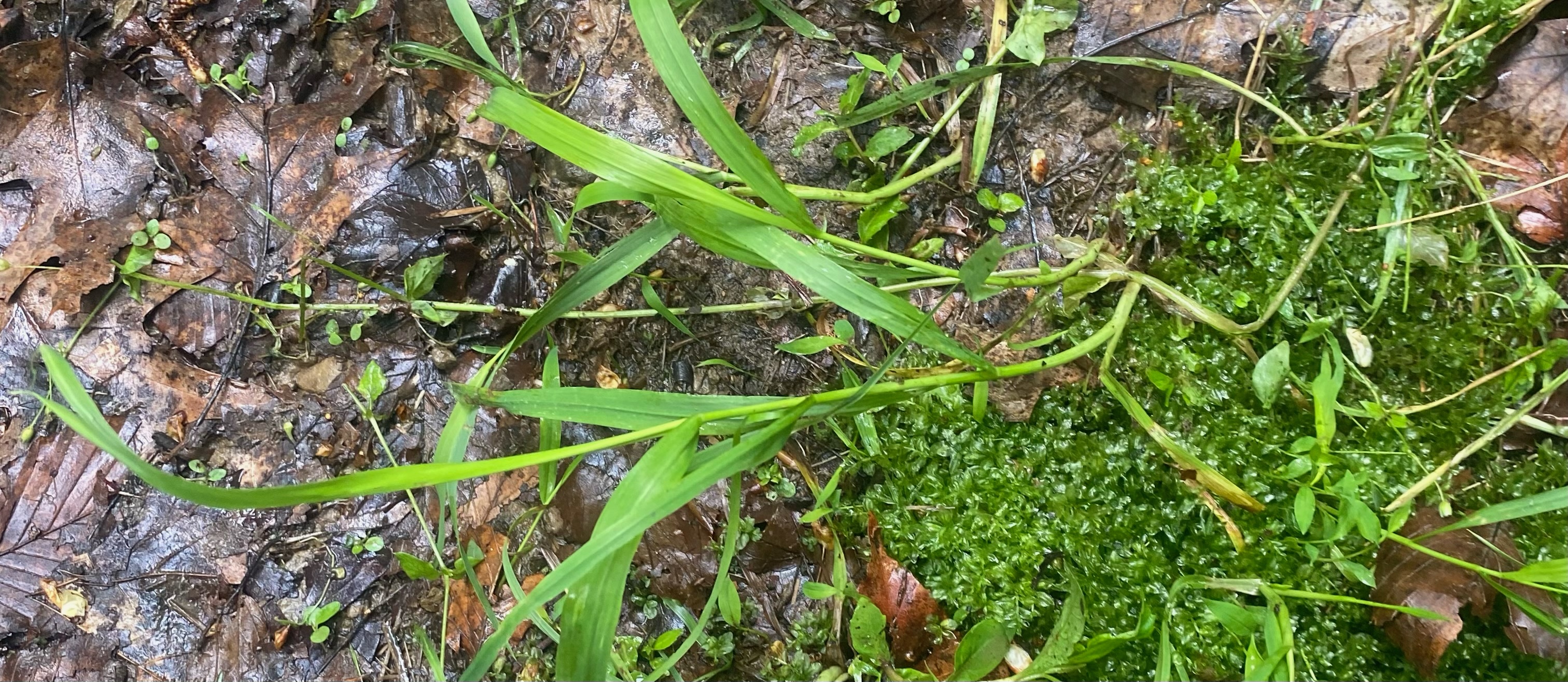Acidophiles
Chestnut Oak
(Quercus muehlenbergii)
Chestnut Oak is an alternatly aranged simple tree. Its teeth are rounded and its end buds are narrow and sharp. It can be found outside the glacier area and does well in acidic soils.
Since it has a lot of tanin in its wood, it was previously used frequently in the lethear tanning. It was ultimatle replaces when a better tree with more tanin came along
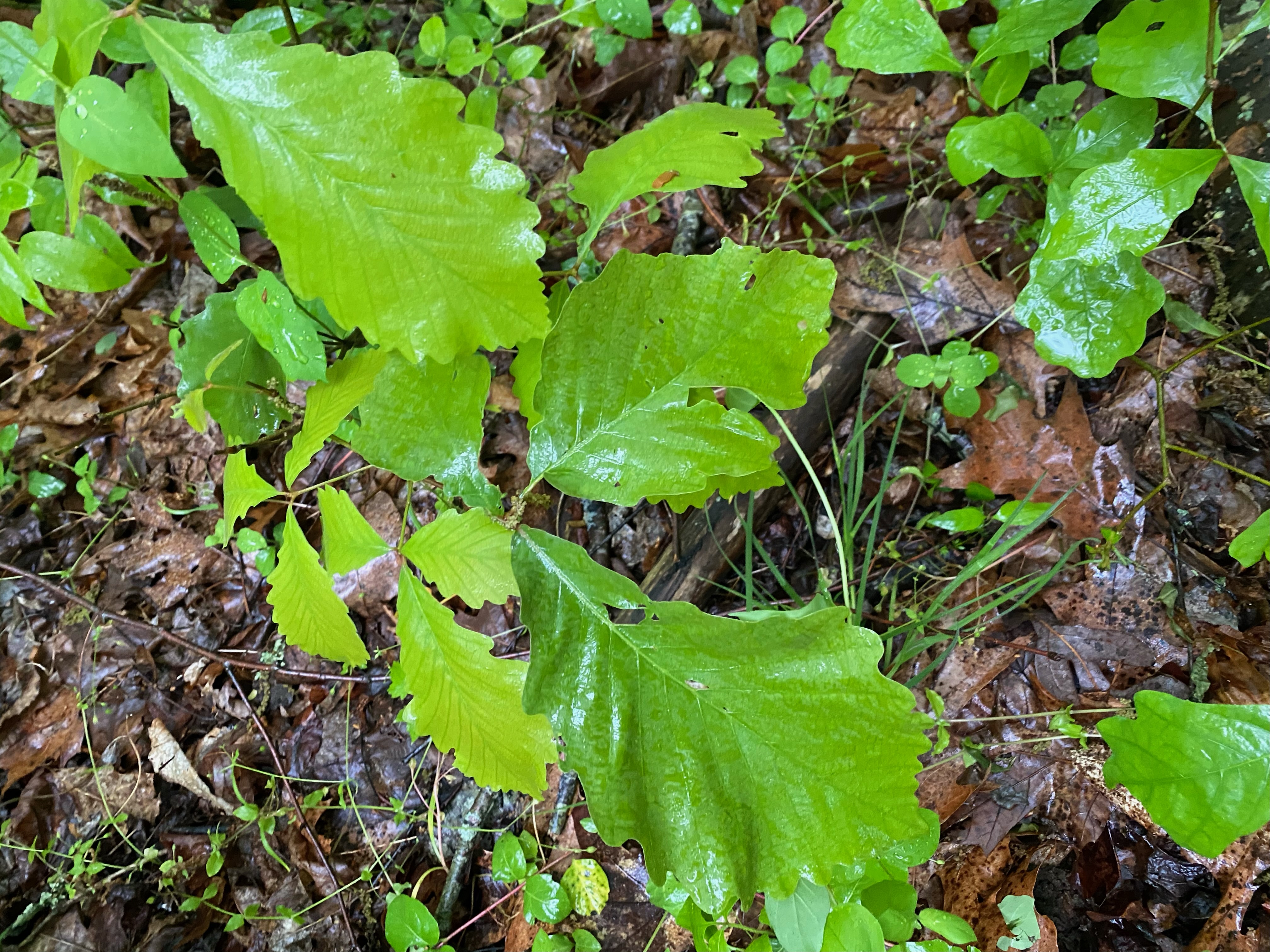
Tall Deerberry
(Vaccinium stamineum)
The tall Deerberry has simple, alternately arranged entire leaves. The underside of the leaves are slightly whitened and hairy.
From our book I learned that its fruits are edible! They are stewed or sweetened then served cold!
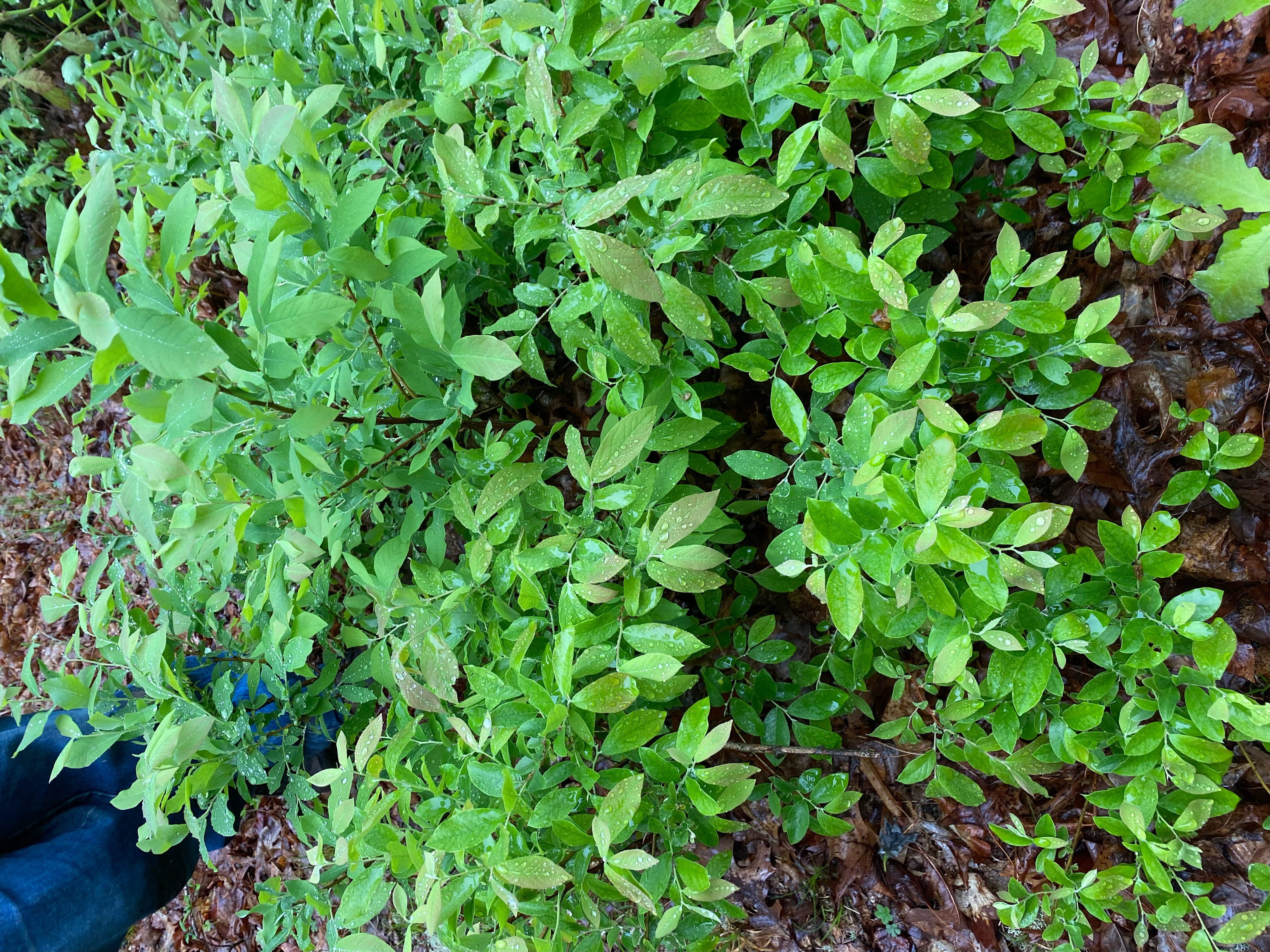
Eastern Hemlock
(Tsuga canadensis)
Eastern hemlock has long needs like leaves that are blunt and flat. The needles are whitened beneath. The twigs are rough beneath. This plant is also distributed across the northeast outside the glacial boundary.
This tree is in danger! If you haven’t heard of it yet, it’s threatened by the Hemlock Woolly Adelgid. This bug is able to quickly infest the tree and is decimating Eastern Hemlock populations throughout Appalachia. What’s even more interesting is how this infestation is killing these trees and altering the carbon cycle hurting even more plant species in the area. https://kids.kiddle.co/Eastern_hemlock.
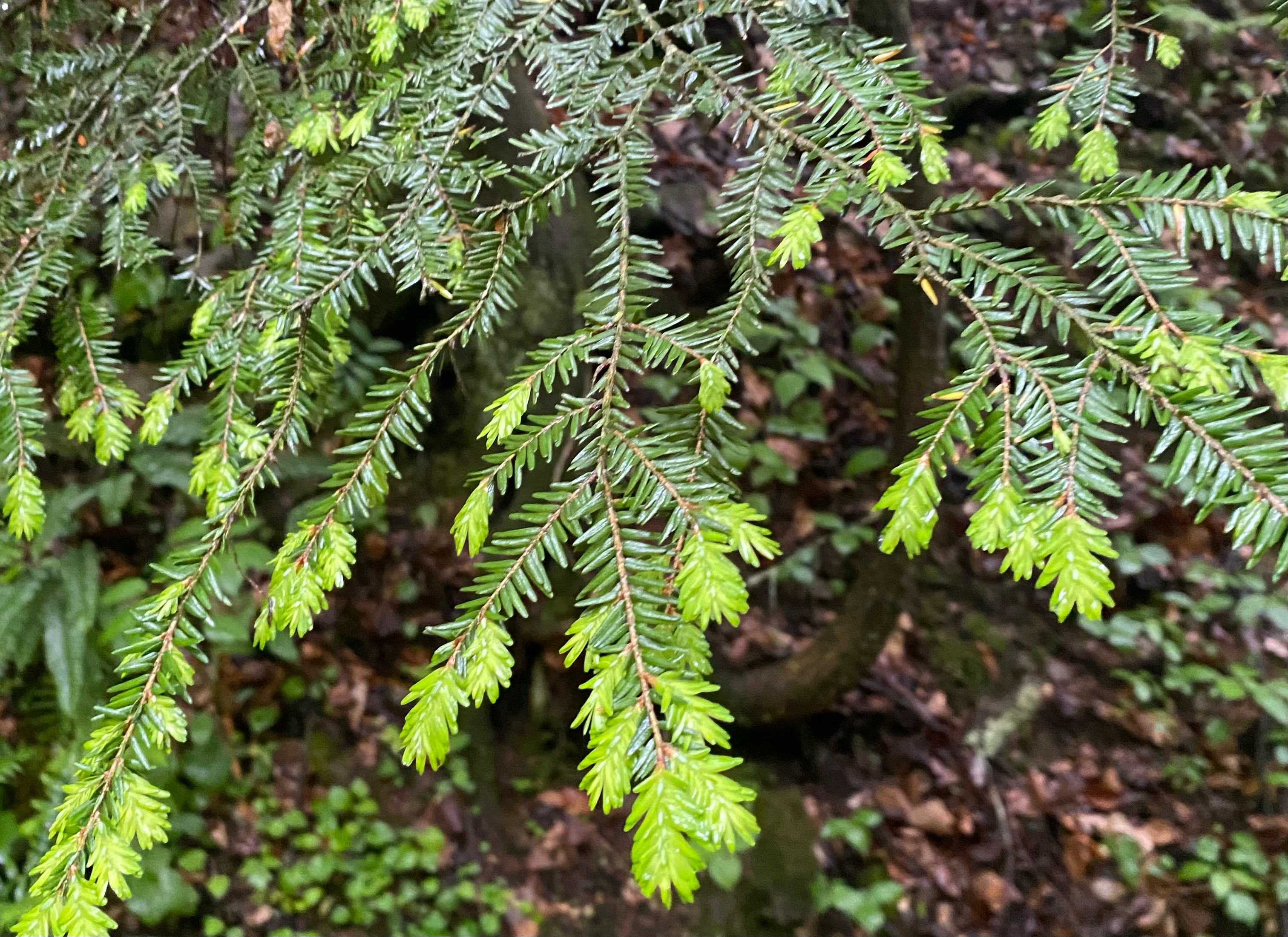
Sourwood
(Oxydendrum arboreum)
Sourwood is another simple, alternately arranged tree. Its leaves are always finely toothed. It has false end buds and small hairless twigs. It’s found in the eastern part of the US and grows well in acidic soils.
The most interesting thing I learned about sourwood is in regards to its honey. It’s able to produce a light honey that crystallizes slowly. It’s said to have a very distinct flavor and pleasant aftertaste. https://www.honeytraveler.com/single-flower-honey/sourwood-honey/#:~:text=Sourwood%20honey%20is%20prized%20by,flavor%20of%20anise%20and%20spice.

Four Ferns
Cinnamon Fern
(Osmunda cinnamomea)
The Cinnamon Fern is holomorphic meaning that it devotes a leave completely to being fertile and others are completely sterile. You can see the large yellow, almost fuzzy-looking leaves in the middle of the photo below, those are the fertile fronds, and it’s completely covered in spores!
It has a pinnate-pinnatifid dissection type. It gets the pinnate from the large division between each pinna, and the pinnatifid due to the lesser cutting seen on the smallest leaflets.
Its indusium type is peltate meaning it is circular and attached by a single stalk.
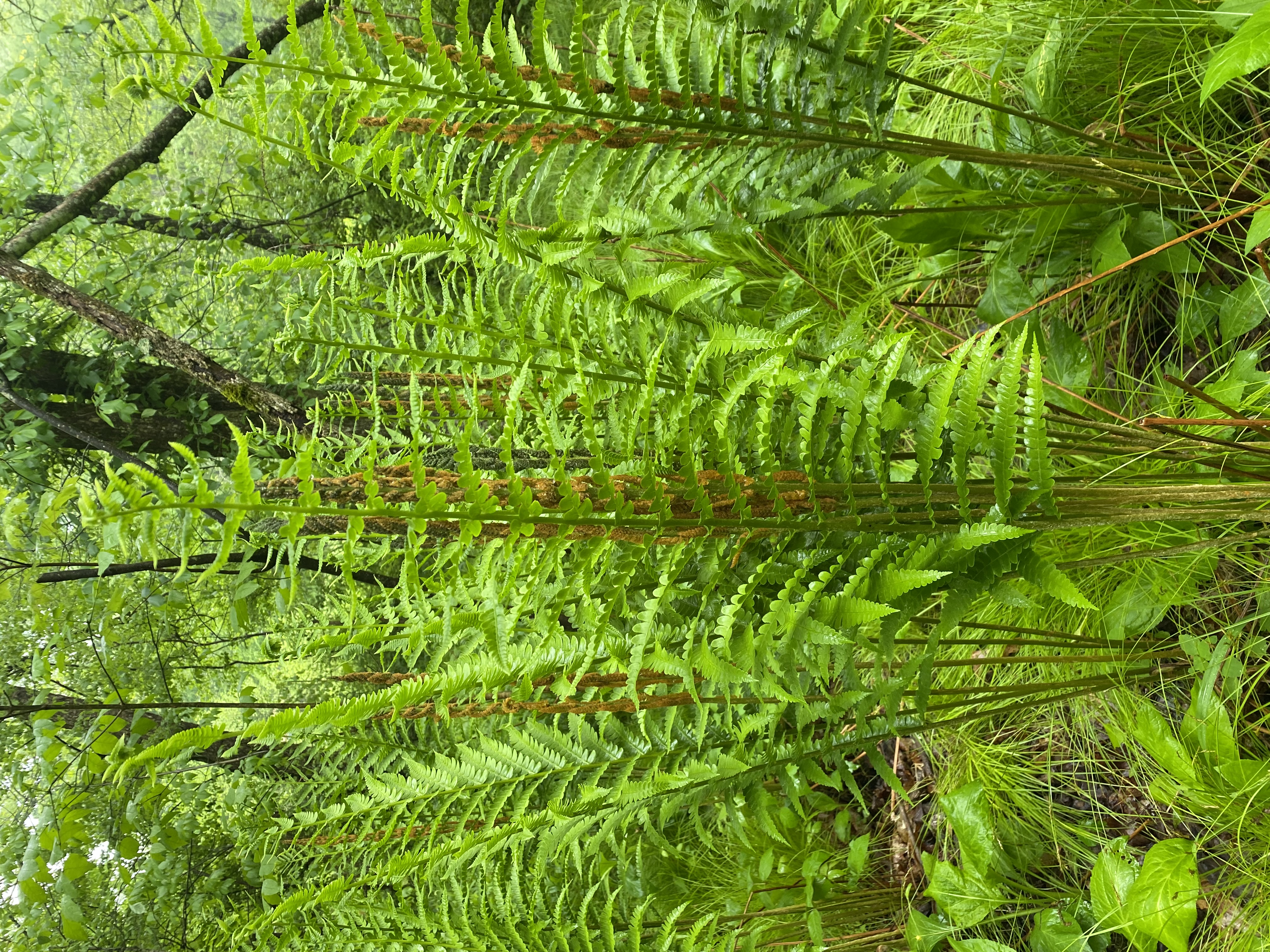
Northern Maidenhair Fern
(Adiantum pedatum)
The Northern Maidenhair fern is tripinnate-pinnatifid, so it’s thrice compounded with lobed final leaflets. It has a monomorphic frond type so its spores are on the underside of these normal leaves. Its indium is false, if you look close enough you can see that its leaf is curled at the end to cover the sori.
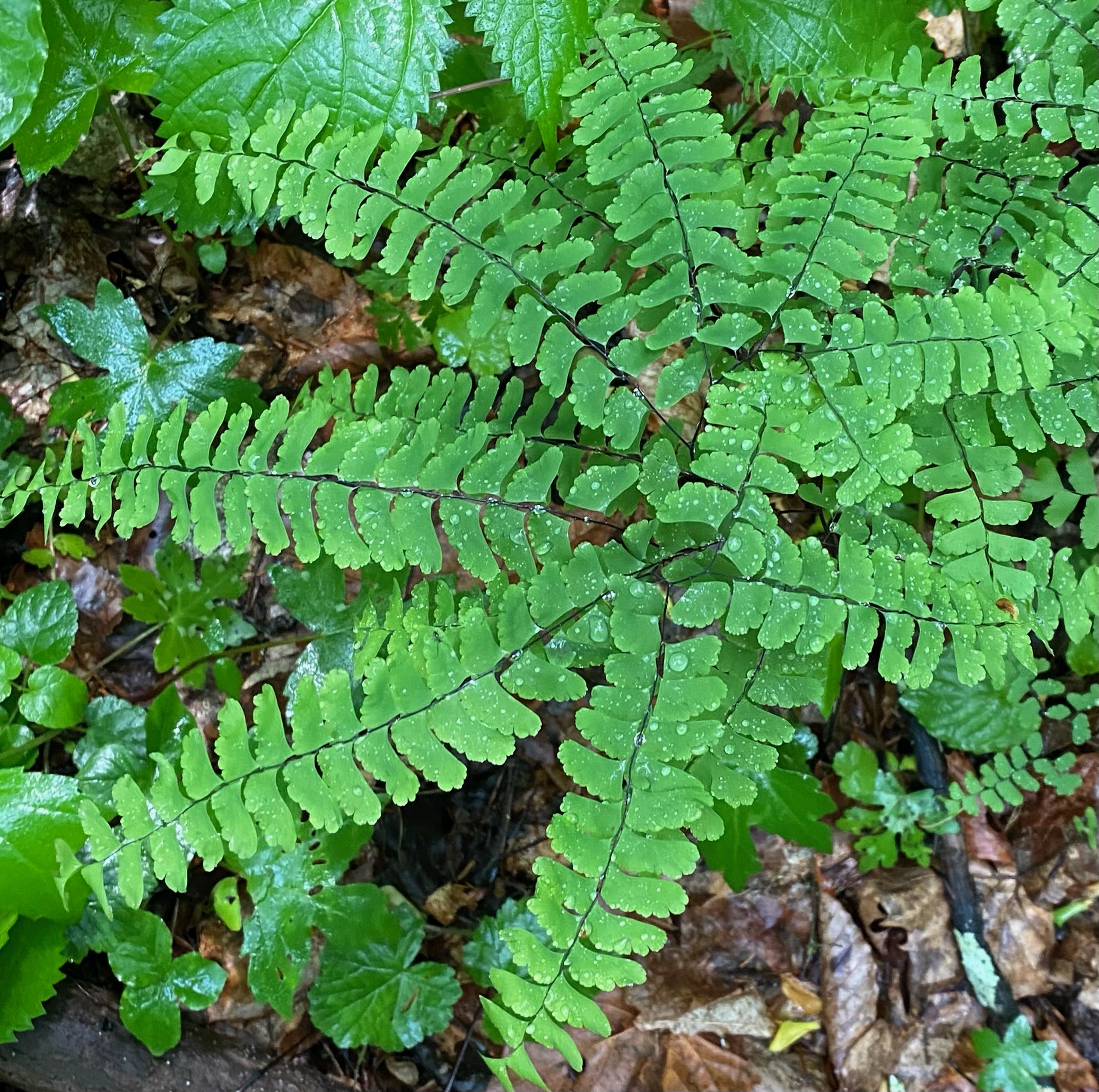
New York Fern
(Thelypteris noveboracensis)
This is a monomorphic fern meaning it produces spores underneath completely normal-looking leaves. It is pinnate-pinnatifid so it’s very obviously dissected. Interestinly, this fern gets smaller at both ends! It has a reniform indusium type meaning its kidney-shaped.

Christmas Fern
(Polystichum acrostichoides)
The Christmas Fern has a hemimorphic frond. This means each leaf is divided into a sterile section and a fertile section. On this fern the top half of each leaf was fertile and the bottom half was sterile. It has a pellate indium which will eventually take over the entire top portion of the plant as it matures. It has a Pinnate dissection type meaning it’s completely divided into separate leaflets.
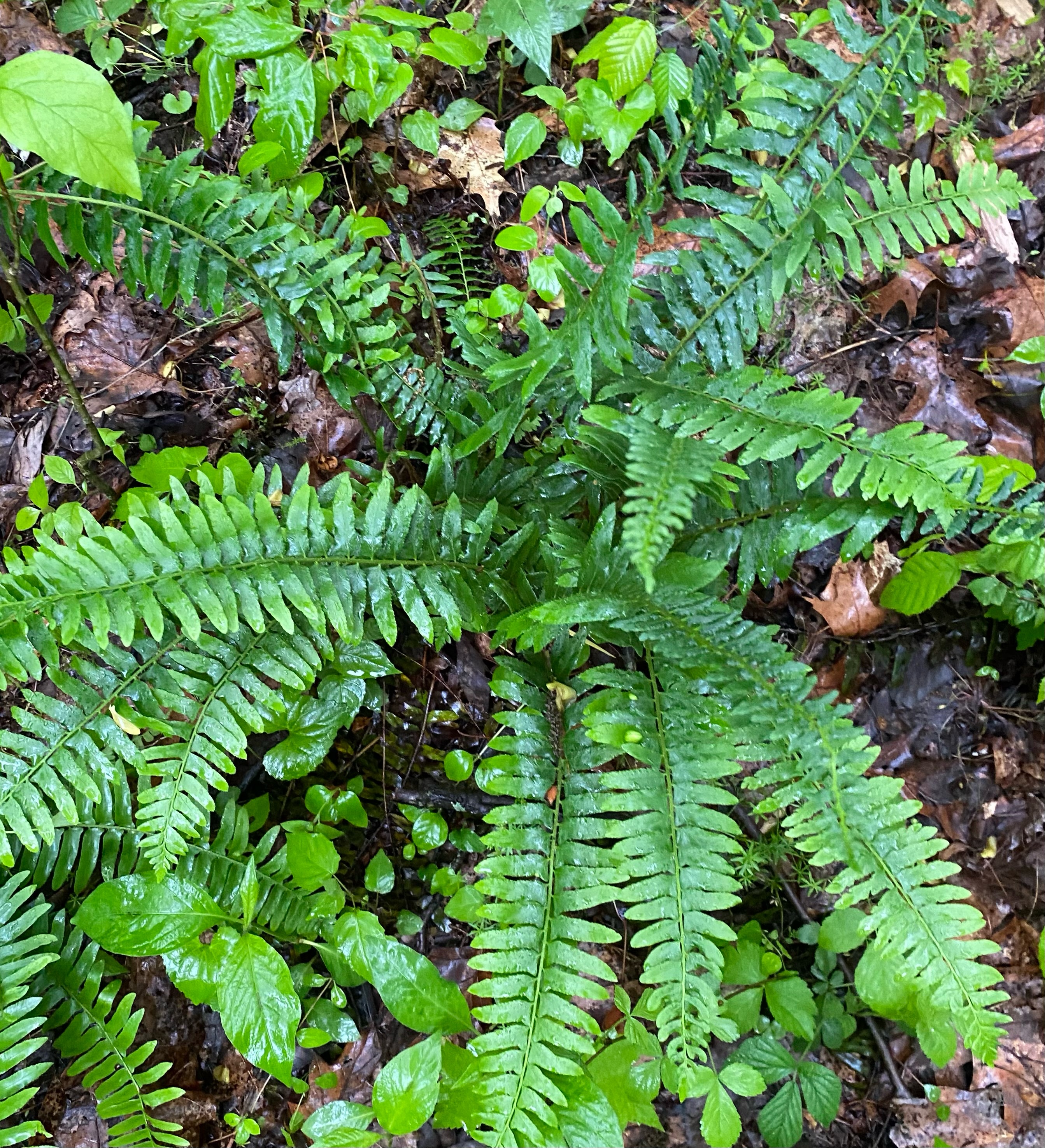
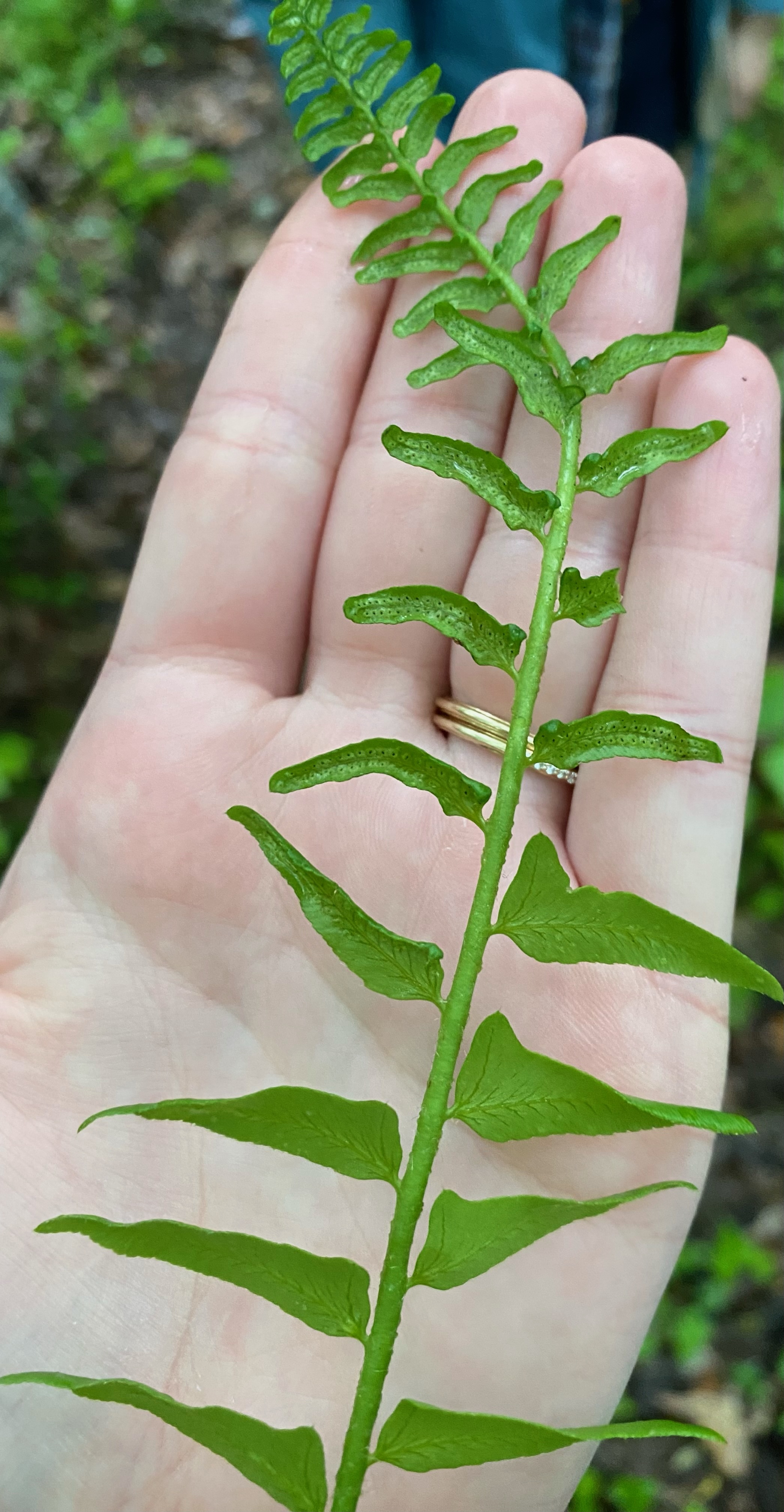
Appalachian Gametophyte
(Vittaria appalachiana)
The Appalachian Gametophyte it an interesting tropical ish plant found in the Appalachian region. One really amazing thing about is that it’s one of three ferns that’s never been observed as a mature sporophyte. It reproduces asexually but only over very short distances. It does so via gemmae, these are large. They can get up to 1 mm. Due to their size, they are far too big for wind dispersal and instead have to rely on animals, water and short distance wind dispersal. It’s even been proposed that they have been dispersed by slugs. As evidence for short distance of dispersal, this species is not seen past the glacial boundary.
To further support its short range dispersal, disturbed areas near Appalachian Gametophyte colonies continue to remain cleared of any traces of the rare species. This is likely due to lack of diversity within the population hybridized from an ancestor and chromosomal number incompatibility.
Also as stated in the article, long distance dispersal from a tropical sporophyte is unlikely, meaning to have the range it has, there must still be some active sporophyte within its population.

Two Invasive Species
Multiflora Rose
(Rosa Multiflora)
The Multiflora Rose was introduced to the US in the 1860s though its native to asian countries. It was planted ornamental, as a barrier for animals and to help with erosion. It’s quickly ale to grow densely along roadsides and overtake natural species. Its now advised that you search your yard for this species in June and September and refrain from planting them. They are early pulled from the ground especially when flowering. Herbicides can also be used, and in areas where these can’t, goats are a great control, as they will eat down the plant. You can read more about it here multiflora-rose-an-exotic-invasive-plant-fact-sheet.

Japanese Stiltgrass
(Microstegium vimineum)
Japanese Stiltgrass is native to most asian countries. It was introduced in the early 1900’s as a packing material when shipping porcelain. It’s now reported to be in 24 US states.
It is able to thrive in a variety of soil, light and climate conditions and it easily takes over native species, growing in densely, making it hard for them to grow. It reduces biodiversity where it is found and most native animals won’t eat it, furthering its ability to thrive.
Since it easily grows in disturbed areas, it’s recommended that that action is not performed. Herbicides can be used for large populations and manual pulling out of the plant if the populations are still small. Annual rye can also be planted as it is able to compete with Japanese Stile grass. You can read more about it yourself japanese-stiltgrass.

